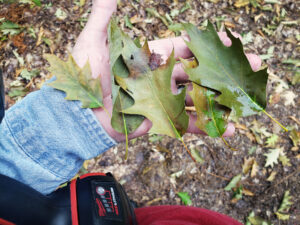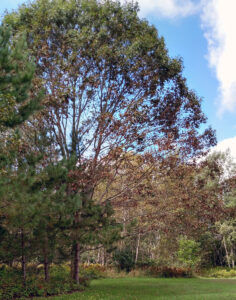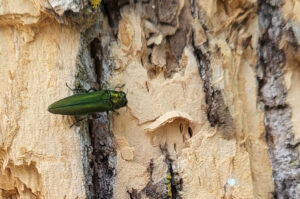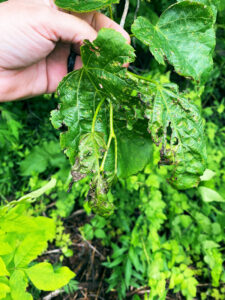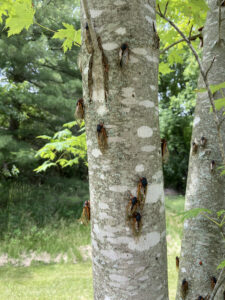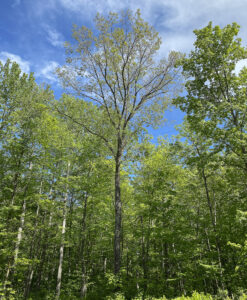By Linda Williams, DNR Forest Health Specialist, Woodruff;
Linda.Williams@wisconsin.gov or 920-360-0665
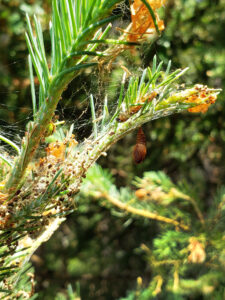
Webbing created by the spruce budworm caterpillar holds needles and frass and protects the caterpillar. A pupa hangs from the branch. / Photo Credit: Linda Williams, Wisconsin DNR
Although symptoms weren’t as prevalent as in 2023, this year marked yet another year of defoliation from spruce budworm.
Another severe year of defoliation causes additional stress on the trees. Even though there has been a lot of rainfall this spring, it’s still stressful for the trees to face repeated years of defoliation by spruce budworm before they begin to decline and die.

